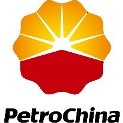Day 1 :
Keynote Forum
Daniel J. Soeder
South Dakota School of Mines & Technology, USA
Keynote: The successful development of shale gas and tight oil resources in North America
Time : 9:45-10:30

Biography:
Daniel J. Soeder is director of the Energy Resources Initiative at South Dakota School of Mines & Technology in Rapid City, SD, USA. He joined SD Mines in May 2017 with eight years of experience as a research scientist at the Morgantown, WV campus of the U.S. Department of Energy (DOE) National Energy Technology Laboratory, where he investigated the environmental risks of unconventional oil and gas development, and 18 years as a hydrologist with the U.S. Geological Survey (USGS) studying groundwater contamination on the U.S. east coast, and nuclear waste isolation in Nevada. Prior to joining the USGS, he spent a decade with the Gas Technology Institute in Chicago, researching hydrocarbon production from unconventional resources. He also worked as a DOE contractor collecting and characterizing Eastern Gas Shale Project cores. He holds a BS from Cleveland State University, and an MS from Bowling Green State University (Ohio), both in geology
Abstract:
The hydrocarbon resources of shale gas and tight oil have made a significant impact on North American energy supplies over the past decade. The production of so-called “unconventional” natural gas from U.S and Canadian shales has saturated North American gas markets, boosted Canada’s exports, and turned the U.S. into a net exporter of natural gas. Tight oil from the Bakken Shale has made North Dakota the second largest oil-producing state in the U.S., trailing only Texas, which maintains first place because of equally prolific liquids production from the Eagle Ford Shale and multiple shales in the Permian basin. Shale development blossomed in the United States between 2005 and 2010, driven by high energy prices, favorable lease positions, and the availability of technology that could economically produce commercial quantities of hydrocarbons from these formations. Development in Canada began later, and some shales have also been developed in Mexico. It is difficult to overstate the importance of shale gas and oil resources to the U.S. and North American energy economies.
Because U.S. unconventional oil and gas achieved dominance in less than a decade, it appears to many people that it came out of nowhere. In reality, researchers and industry went through an intense and protracted technical struggle. Modern attempts to assess and produce these resources began in the late 1970s, but success was elusive for nearly two decades until some visionary people hit upon the combination of horizontal drilling and staged hydraulic fracturing that proved to be a successful technology for producing shale gas and tight oil reservoirs. Shale development creates environmental risks to air and water, and technology that works on one shale play may not work on another. Other countries are looking to North American for leadership on environmental and developmental challenges as they consider producing their own shale resources.
Keynote Forum
Steven Tedesco
Atoka Inc., USA
Keynote: Conversion of methane gas from coal and oil and gas sources as a stop gap for the electrical grid and reduction in climate change gases
Time : 10:30-11:15

Biography:
Dr. Steven Tedesco has thirty-four years of experience in the resource business involving all aspects of petroleum exploration and production with additional experiences in coal and precious metal mining, ranching and farming. Dr.Tedesco is a high achiever who has a history of successful business management and money raising and is looking to serve on the board for a company with the right assets, vision and organization.
Abstract:
Because of growing concerns about climate change and methane emissions, US and Canadian federal, state and provincial governments are addressing how to remove methane gas from the atmosphere in an economical way. Methane is generated from a variety of industrial, geologic and biological sources but specifically discussed here are stranded or shut-in gas wells, well flaring, coal mine leakage and coal bed methane well sources. In the US in 2016 $201 BCFG was flared or vented with an economic loss of $522M+. In conjunction with this problem is the decommissioning of significant numbers of coal-fired and nuclear power plants in the US and Canada. The trend is toward more power plants driven by natural gas and renewable sources excluding hydro. Governmental and industry concern is that the decommissioning of power plants with a capacity of 72GW will not be replaced as quickly as needed by natural gas and renewable sources. In addition, many states in 2018 will be enact significant fines for flaring and leaking oil and gas industry facilities that do not cease methane emission and achieve zero emissions. The equipment to process non-marketable or secondary gas has been around for some time. However, simply converting this gas to electricity still creates significant emissions. The goal of several states is to create zero emissions for which the technology does exist and is an additional add on. In addition, converting gas to electricity and selling it to the grid today is more easily done in many oil, gas and coal areas then historically. A specific need for electricity is the Internet industry which has projected electrical demand for “server farms” or “data centers” for data mining to require 50 power plants at 500 megawatts each by 2020. These “server farms” require tremendous amount of electricity to cool and heat the facilities year round which will cause distress in the electric grid in the US and Canada. If all of the “server farms” were combined worldwide they would be equivalent to a country consumption between Italy and Spain. The application of this technology is worldwide. As governments and regulators seek to eliminate natural gas emissions from both natural gas wells, factories and biomass sites the need for technology will grow. As the world economy grows the need for sources of electricity will be benefited by this technology. The opportunity for the coal, oil and gas industry is clearly present in converting stranded, flared and abandon gas wells into profit centers and minimize negative public view point of these type of operations.
Keynote Forum
Klaus Regenauer-Lieb
University of New South Wales, Sydney
Keynote: Next generation reservoir engineering
Time : 11:30-12:15

Biography:
Abstract:
Keynote Forum
Ailin Jia
Research Institute of Petroleum Exploration and Development, China
Keynote: Enhancing recovery rate by well pattern infilling for tight sand gas in China
Time : 12:15-13:00

Biography:
Professor Jia is an expert of development of natural gas resource. He received his B.S. degree in Petroleum Geology from the China University of Petroleum and his M.S. and Ph.D. degrees in Petroleum Engineering from Research Institute of Petroleum Exploration & Development (RIPED), Beijing, China. In 2005 he became a Professor of Petroleum Engineering at RIPED, PetroChina. From 1992, he has worked in the areas of oil & gas geology, reservoir modeling and engineering. He is currently director of Ordos Basin Branch Institute of RIPED, PetroChina. As a professor, he has published over 80 papers and 10 books in the oil & gas development fields.
Abstract:
Tight gas plays an important role in natural gas of China. After about 15 years exploration and development, the original reserves and explored reserves of tight gas have been proven to be in large scale. It has fulfilled the beneficially development in Ordos Basin, Sichuan Basin and Songliao Basin, and the total production has exceeded 30 billion cubic meters, accounting for about 1/4 of total natural gas production of China.
In this paper, geological characteristics of China's tight gas reservoirs are systematically analyzed, which are divided into three kinds: multi-layered stacked lenticular reservoir, layered reservoir and massive reservoir. Meanwhile, it`s more complicated for tight gas development in China than that in the United States or in Canada through the comparison of reservoir geological characteristics.
The tight gas development is benefit from engineering and technology based on its own geological characteristics, including high-quality reservoir prediction and well placement optimization, low-cost & fast drilling technology, large well group-multiply well group-factory operating pattern drilling technology, stimulation technology, underground restriction & low pressure transmission, water drainage technique and digital management.
Though tight gas develops fast, it faces with the general problem of low recovery at the same time, with the value just around 35%. Therefore, enhance gas recovery rate has become the key issue now and the future. Taking Sulige gas field, the largest natural gas field in China for example, four kinds of technical methods, reasonable allocation of well production, water drainage technique, old well lateral drilling and well pattern infilling, are introduced to increase gas recovery efficiency. The series of techniques can also provide reference for the same kinds of reservoirs to guarantee stable and beneficial development in the long term.
- Petroleum Geology | Hydraulic Fracturing | Advanced Drilling Technologies | Petroleum Refineries | Computer Applications in Petroleum Engineering| Advanced Natural Gas Engineering
Location: Sydney

Chair
Daniel J. Soeder
South Dakota School of Mines & Technology, USA
Session Introduction
Yan Haijun
Research Institute of Petroleum Exploration and Development, China
Title: Types, characteristics, challenges and development technologies of carbonate gas reservoirs in China
Time : 14:00-14:30

Biography:
Yan Haijun, born in Henan, China, received his B.S. degree in Petroleum engineering from the Northeast Petroleum University and his M.S. degrees from Research Institute of Petroleum Exploration & Development (RIPED), Beijing, China. From 2006, he has worked in the areas of oil & gas geology, gas development. He is currently the engineer of Department of Ordos E&P,RIPED,working mainly on gas development. As an engineer, he has published over 10 papers and 1 book.
Abstract:
Carbonate gas reservoir in China mainly distributed in Sichuan, Ordos and Tarim Basin, and its reservoirs are respectively accounted for 58.57%, 23.28% and 12.99%. Carbonate gas reservoir, whose production accounts for about 30% of the total, plays an important role in the whole natural gas industry. In China, carbonate reservoir stratum has a wide distribution, ranging from Sinian to Triassic. There are 455 ×104km2 distribution area, including 28 onshore marine basins, whose area is 330 ×104km2,and 22 offshore marine basins, whose area is125×104km2. Compared with sandstone gas reservoirs, carbonate gas reservoir are facing some questions, such as greater reservoir heterogeneity, more difficult to predict, more complex fluid properties and distribution, greater differences between wells, and larger difficult to maintain stable production. Relatively speaking, the level of exploration and development of carbonate gas reservoir in China is low and gas reservoir development lacks effective development technologies. Aiming at enhancing the level of development and strengthening systematic research, the research of type classification, characteristics, challenges and development technologies is very important to the efficient development of carbonate gas reservoirs.
Researchers of different professionals have different classification results of carbonate gas reservoir types. At the same time, according to the difference of research focus, different scholars have different classification results. Based on the development practices of past decades and the current development status, in accordance with the development characteristics, carbonate gas reservoirs in China are divided into four types. These four types include fracture-cave, reef flat, weathering crust and layered dolomite carbonate gas reservoirs. Moreover, this paper pointed out the differences in the reservoir genesis, gas reservoir characteristics, and development problems of carbonate gas reservoirs, and put forward some specific development technologies.
Guo Zhi
Research Institute of Petroleum Exploration and Development, China
Title: Horizontal Well Geological Optimization in Tight Sand Gasfiled of Braided-river Facies
Time : 14:30-15:00

Biography:
Guo Zhi got his PhD degree at Petrochina Research Institute of Petroleum Exploration and Development in 2014 and has engaged in his career for about 10 years. His major is Oil & Gas development geology. He has made some progress in reservoir description, geology modelling, reserves classification and horizontal well optimization for tight sand gas, publishing more than 10 influential papers both home and aboard.
Abstract:
Sulige gasfield is a typical tight sandstone gasfield of braided-river facies in China with features of poor reservoir property and strong reservoir heterogeneity. Horizontal well technology is an effective means to improve gasfield development effect. The control of braided-river system zones’ distribution on effective sand bodies was analyzed quantitatively, and the horizontal well geological target selection standards were formed respectively in superimposed zone and transitional zone of braided river system. Considering the poor applicability of conventional modeling method, a new modeling method is put forward called “multi-stage constraints, hierarchical facies and multi-step models”. The modelling method strengthens the prior knowledge control, reduces data interpretation uncertainty, and improves the model’s reliability. Based on the geological model, with 3D visualization technology, horizontal well were designed and well trajectories were optimized.It is pointed out that in superimposed zone, channel bars are developed with relatively high ratio and larger scale, similarly, effective sand bodies are enriched with massive and thick type. Thus, the horizontal wells there may be deployed uniformly with large-scale corresponding to straight or high angle trajectory. While in transitional zone, channel filling microfacies are more developed, and sand bodies are scattered and scarce, so horizontal wells there should be deployed cautiously with dessert type, and the well trajectory is mainly ladder type. This geological optimization process of horizontal wells, combining multidisciplinary data such as logging and seismic data, is more intuitive in image display, more convenient in data transmission and update, and improves the effective reservoir drilling rate up to over 70% from previous 60%. This research can play a more reliable geo-steering function for horizontal wells while drilling and can enhance horizontal well exploitation effect. Furthermore, it may provide rapid and accurate reference for gasfield development.
Guo Jianlin
Research Institute of Petroleum Exploration and Development, China
Title: Recovery rate calculation method of large tight sandstone gas field
Time : 15:00-15:30

Biography:
Guo Jianlin, born in Hunan province, China, received his B.S. degree in Petroleum Geology from the China University of Geoscience and his M.S. and Ph.D. degrees from Research Institute of Petroleum Exploration & Development (RIPED), Beijing, China. From 1998, he has worked in the areas of oil & gas geology, reservoir modeling and engineering. He is currently senior engineer of Department of Natural Gas Development ,RIPED,working mainly on gas development.
Abstract:
Large tight sandstone gas field are characterized with big gas bearing area, poor reservoir property, strong heterogeneity and enormous scale of reserves and production. For tight sandstone gas field, recovery rate and the ultimate production are the key indicators to guide long-term stable development, make development technical strategies and evaluate the development effect. Due to its small pore & throat and complex seepage mechanism, tight sand gas is difficult to obtain accurate recovery data by conventional laboratory simulation methods. Taking Sulige large tight sandstone gas field as the research object, typical blocks are selected from the central, east, west, south zone to carry out detailed anatomy, and production wells are classified into three types according to the geological characteristics and development effect. The area ratios of various wells zones are restricted by sedimentary facies distribution. Choosing a large number of wells with long production history and in the quasi-steady-state for analysis samples, using rate transient analysis and production curvilinear integral methods, the dynamic reserves and the ultimate production are evaluated for each type of well. Integrating reservoir scale, structure and production dynamic characteristics, single well’s control scope is determined. The technical limited production, producing reserves and recovery rate are simulated considering the well pattern would be infilled with a high density. The research result shows that the technical limited recovery rate of the gas field is 71.2~ 78.5%, average 75.3%, while that of conventional gas reservoirs is 80~90%. The gas field has a technical limited production of 1.96 trillion square meters, and the current economic limited production is 1.17 trillion square meters. In the future, with the technology improvement and the development cost reduction, the production of gas field will increase by 0.79 trillion square meters.
Chen Xiangjun
Research Institute of Petroleum Exploration and Development, China
Title: Production calculation of trans-layer fractured horizontal wells
Time : 15:45-16:15
Biography:
Chen Xiangjun Graduated from China University of Petroleum, study in Research Institute of Petroleum Exploration& Development as master
Abstract:
Drilling trans-layer fractured horizontal wells is an effective method to improve the economic benefits of developing thin pay zones and low permeability reservoirs. Since the pay zones are thin and crossly distributed, the method could apparently improve the efficiency of horizontal wells and enhance oil recovery. The theory of equivalent wellbore radius is used to predict the productivity in this research to simplify this problem. The theoretic method to calculate the production of trans-layer fractured horizontal wells is given in this research. According to the result and the situation of research area, the affecting factors of the number of fractures, the fracture half-length and the fracture distance are given, which might guide the developing of trans-layer fractured horizontal wells.
Mohamed A. F. Omran
British university in Egypt, Egypt
Title: New Approach for Unconventional Reservoirs Rock Typing Characterization: Egyptian Unconventional Gas Reservoirs
Time : 16:15-16:45

Biography:
Mohamed, year four petroleum engineering & gas technology student at the British university in Egypt (BUE). Currently, he is the highest ranking petroleum engineering student at BUE. His graduation projects are research project concerning establishing new correlations for enhancing unconventional reservoirs characterization, and design project concerning development of a new software for well test analysis of unconventional gas reservoirs. Moreover, he has been accepted to get a scholarship of master of petroleum engineering at Norwegian University of Science and Technology (NTNU) next fall 2018. Also, he has participated in SPE ADIPEC University program in Abu Dhabi, 2016 as a Research Presenter, besides being a Poster Presenter at the 58th SPWLA Annual Symposium in Oklahoma City, 2017, and achieving the third place in the international students paper contest in London 2018. In addition to being speaker and assistant opening ceremony speaker at the 3rd world congress on petroleum engineering and natural gas recovery in Sydney 2018
Abstract:
According to OPEC 2013, Global economy is strongly based on Fossil Fuels which represents 90% of the primary energy produced in the world. Fossil Fuels by definition, are non-renewable sources of energy, and their amount is limited, moreover huge amounts of oil and gas world reserves has been produced. Nowadays, world energy consuming at an all-time very high, where all resources are required such as renewable energies including solar, wind, besides nuclear energy, and biofuel. There is not any source can supply and fulfill our increasing demands of energy consumption. Unconventional reservoirs can add huge amount to resource base like organic shale, tight gas and oil, coalbed methane. These reservoirs are transforming the global energy market through advances in reservoir characterization, drilling, and completion technologies have turned these reservoirs from uneconomical source rocks into sought-after resources. The greatest industry challenges are the determination of how to systematically convert these unconventional resources potential into economical and commercial reserves. In addition to improving scientific understanding of the unique characteristics of these formations is leading the way to a cleaner energy future. Although shale resource estimates will likely be changed over time, the initial estimate of technically recoverable shale gas resources in 41 contraries is 7,299 trillion cubic feet (Tcf). To put that into perspective, just 1 Tcf is enough to heat 15 million homes for a year. For all shale, including liquids, conservative estimates for oil and gas resources exceed 2 trillion barrels of oil equivalent. Almost all unconventional wells must be hydraulically fractured in multiple stages. The better reservoir extent, Hydrocarbon content, permeability and pressure are, The better play’s potential. In addition, Successful projects depend upon interconnectedness of natural fracture networks, mineralogy and thermal maturity of the shale. Creating the reservoir quality (RQ) maps across a given play helps reservoir engineers to overcome the difficulties of these resources of nano-darcy permeability, this requires a good formation evaluation plan and in terms of the nature of the formations and their fluid content of unconventional reservoirs by using element of spectroscopy (EOS) and other modern techniques in Egypt where has two substantial resources of oil shale with reserves more than 11 billion barrel of oil shale.





